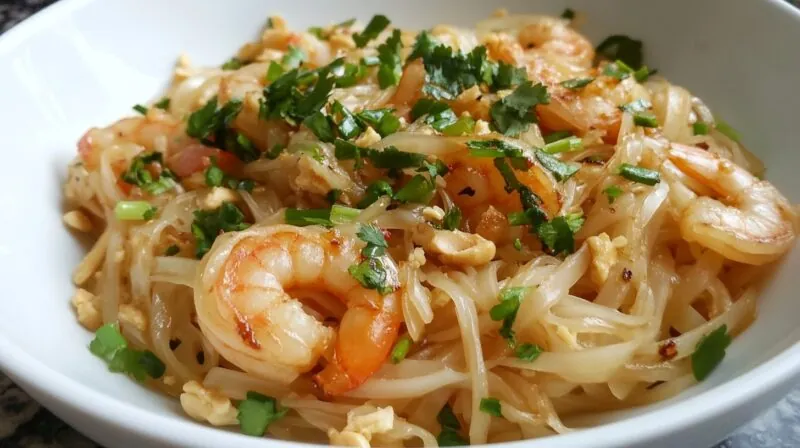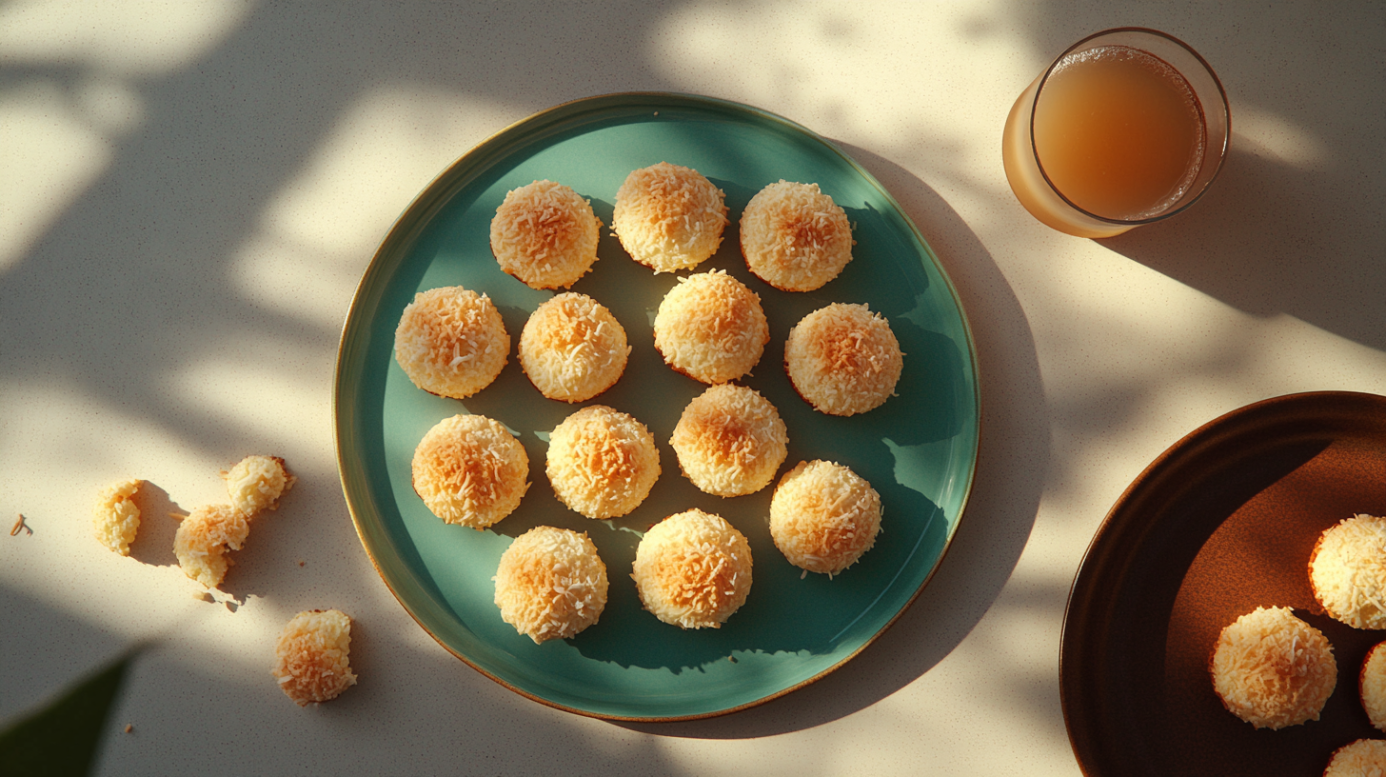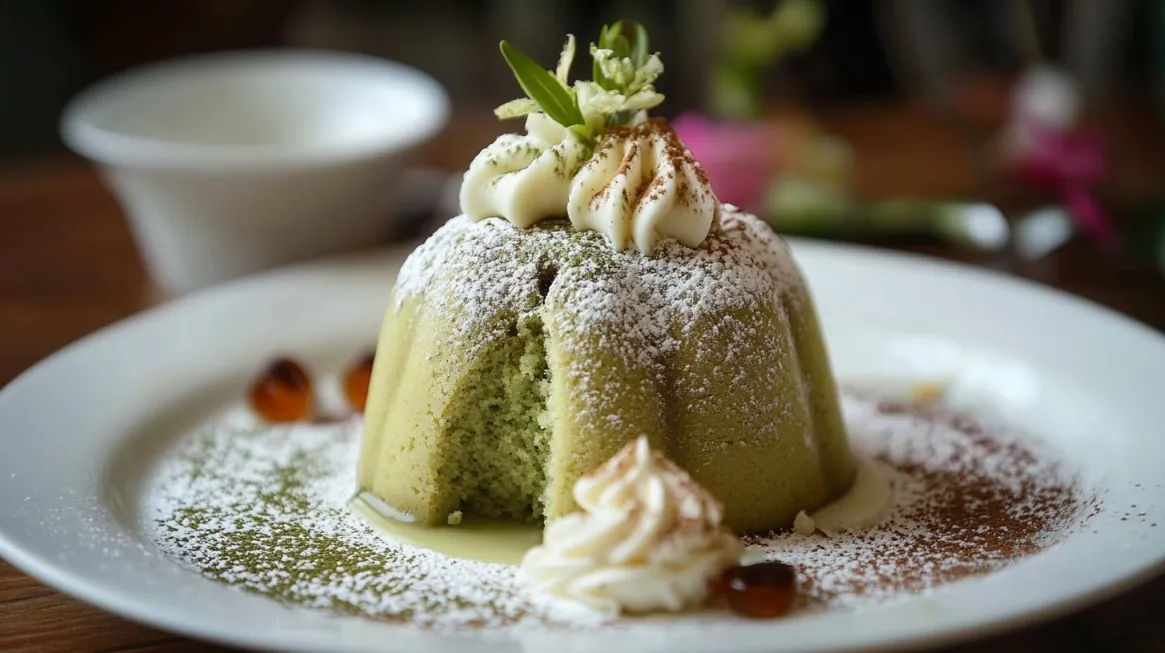Gluten-Free Pad Thai is a delicious, quick, and healthier take on the classic Thai dish. Packed with vibrant flavors from tamarind, lime, and a hint of sweetness, it’s perfect for dinner or a special occasion. The recipe is naturally gluten-free, using rice noodles and a tamari-based sauce, making it ideal for those with dietary restrictions.
Serve with lime wedges, crushed peanuts, and fresh cilantro for a restaurant-style presentation at home.

Table of Contents
ToggleGluten-Free Pad Thai Recipe
Equipment
- Large pot (for boiling noodles)
- Large skillet or wok
- Small mixing bowl
- Whisk or fork
- Tongs or spatula
- Knife and cutting board
Ingredients
For the Pad Thai Sauce:
- 3 tbsp tamarind paste
- 3 tbsp tamari gluten-free soy sauce
- 2 tbsp fish sauce or substitute with more tamari for vegetarian/vegan
- 2 tbsp coconut sugar or brown sugar
- 1 tbsp lime juice
- 1 tbsp chili paste or sriracha optional, for heat
For the Pad Thai:
- 8 oz rice noodles
- 2 tbsp vegetable oil or peanut oil
- 2 cloves garlic minced
- 1 cup cooked chicken, shrimp, or tofu optional, for protein
- 2 large eggs beaten
- 1 cup bean sprouts
- 3 green onions sliced diagonally
- 1/4 cup roasted peanuts crushed
- 1/4 cup fresh cilantro chopped
- Lime wedges for serving
Instructions
- Step 1: Prepare the Noodles:Boil water in a large pot and cook rice noodles according to package instructions.Drain, rinse with cold water, and set aside.
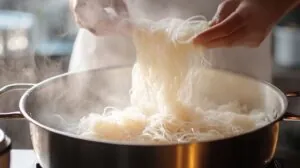
- Step 2: Make the Sauce: In a small mixing bowl, whisk together the tamarind paste, tamari, fish sauce, coconut sugar, lime juice, and chili paste (if using). Adjust sweetness or acidity to taste.

- Step 3: Cook the Pad Thai:Heat oil in a large skillet or wok over medium-high heat.Add minced garlic and sauté for 30 seconds until fragrant.Add protein (chicken, shrimp, or tofu) and cook until heated through.Push everything to one side of the skillet. Pour beaten eggs into the empty side and scramble until just set. Combine with the rest of the skillet contents.Add cooked rice noodles and pour the sauce over them. Toss well to coat the noodles evenly.

- Step 4: Finish and Serve:Stir in bean sprouts and green onions. Cook for 1-2 minutes to warm through.Serve immediately, garnished with crushed peanuts, fresh cilantro, and lime wedges.
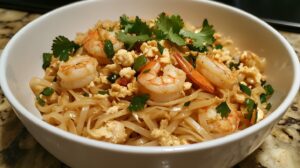
Video
Notes
Nutritional Information (per serving)
- Carbohydrates: 62 g
- Protein: 15 g
- Fat: 15 g
Cooking Tips
- For extra flavor: Toast the peanuts before crushing them for a richer taste.
- Control the heat: Adjust the chili paste based on your spice preference.
- Tamarind paste substitute: If unavailable, use a mix of lime juice and a touch of molasses for a similar tangy sweetness.
Alternatives for Gluten-Free Pad Thai Ingredients
One of the great things about Pad Thai is its flexibility, making it easy to adapt the recipe to your dietary preferences or available pantry items. If tamarind paste isn’t readily available, you can create a substitute by mixing lime juice, molasses, and a touch of vinegar for a similar tangy-sweet flavor profile.
While tamari is the go-to for a gluten-free soy sauce, coconut aminos work perfectly as a soy-free alternative. For those avoiding fish sauce, you can replace it with additional tamari or use a vegan fish sauce made from seaweed and mushrooms.
For the noodles, traditional rice noodles are naturally gluten-free, but zucchini noodles or spiralized carrots can be used for a low-carb twist. Peanut oil is a flavorful choice for stir-frying, but you can substitute it with avocado oil or any neutral cooking oil.
Crushed peanuts are a classic topping, but if you have a peanut allergy, crushed cashews or sunflower seeds make excellent substitutes. For protein, feel free to swap chicken or shrimp with tofu, tempeh, or even scrambled chickpea “eggs” for a vegan version. The versatility of this dish ensures it’s as accommodating as it is delicious.
The Bottom Line
Making a delicious and easy gluten-free Pad Thai at home is a fantastic way to enjoy a beloved Thai dish without compromising on flavor or dietary needs.
With simple ingredients and a few straightforward steps, you can create a vibrant and satisfying meal perfect for any occasion.
Customize it with your favorite proteins and toppings to make it your own, and enjoy the bold, zesty flavors that make Pad Thai a favorite around the world.
On the other note, there are lots of gluten-free cereals to try out, don’t think that just because you’re on a certain diet that you can’t experiment.

